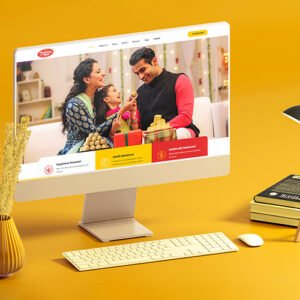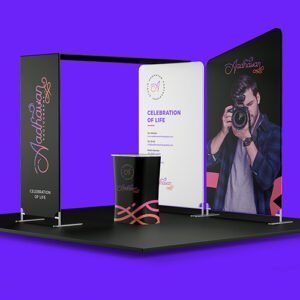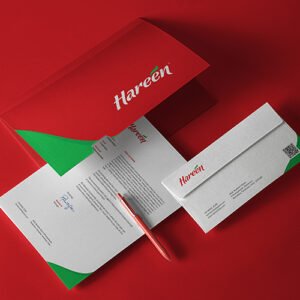If you love creating visuals, playing with colors, or making social media posts look beautiful, you might have thought about becoming a graphic designer. But where do you start? Can a graphic design course really help you build a career? The answer is YES — a good graphic design course can turn your creativity into a professional skill that companies pay for.
Let’s look at how joining a structured graphic design program can open doors for you, with real examples from the design world.
1. Learn the Right Tools — Faster and Smarter
Graphic design is not just about drawing; it’s about using professional software to create powerful visuals. Tools like Adobe Photoshop, Illustrator, InDesign, and Figma are standard in the industry. Learning them on your own can feel confusing because you don’t know what to focus on first.
A professional course gives you a step-by-step learning path. For example, at Branzone Design School, students start with design basics and move to advanced tools like Figma for UI/UX and Illustrator for vector art. Instead of wasting months on random YouTube videos, you get structured lessons that teach what’s really used in real projects.
Real-world example:
One of Branzone’s students, Manju, joined with no prior knowledge of design software. Within six months, she learned Photoshop, Illustrator, and branding techniques, built a portfolio, and landed a job at Logo Partner, a Chennai-based agency. She says, “Learning the right tools in the right order made the process clear and fast.”
2. Build a Creative Mindset — Not Just Software Skills
Many people think design is just knowing software, but the truth is: creativity and problem-solving matter more. A good course teaches you color theory, typography, layout design, and branding psychology — the things that make a design communicate a message.
For example, if you’re designing a logo for a bakery, it’s not just about making it look pretty. You need to choose warm, welcoming colors (like cream or brown), soft fonts, and simple shapes that customers can remember. Courses teach you these principles with real assignments.
At Branzone, students work on branding projects like designing for restaurants, tech startups, or non-profit campaigns. This helps them think like real designers who solve business problems, not just make art.
3. Real Projects = Real Confidence
One of the biggest advantages of a design course is getting hands-on projects. Instead of doing only theory, you work on live briefs — just like in an agency.
For example, students may be asked to:
Create a logo for a coffee shop.
Design a social media campaign for a clothing brand.
Build a packaging concept for a skincare product.
These projects go into your portfolio — a digital folder or website that shows employers what you can do. Companies care more about your portfolio than your marks.
Real-world example:
Branzone students have worked on live branding for small businesses, and some even got their first freelance clients during the course. One student created a brochure for a construction company (P&C Construction) while still learning — it later became part of his job interview portfolio.
4. Learn from Mentors Who Work in the Industry
Learning from experienced designers is a game-changer. Good mentors don’t just teach tools; they share how the industry really works — client meetings, revisions, pricing your work, and career tips.
At Branzone, mentors like Suman M bring 12+ years of real agency experience. They explain why Apple uses minimalism, why Nike focuses on bold design, and how McDonald’s yellow color builds happiness. These insights help students think strategically, not just artistically.
5. Networking & Internship Opportunities
In creative fields, who you know matters. When you study in a reputed school, you meet other students, alumni, and industry professionals. This network can lead to internships, jobs, or freelance gigs.
For example, Branzone’s students often get placement assistance and referrals to top agencies. Many graduates now work at creative companies in Chennai, Bangalore, and even abroad. Some have started their own freelance studios with clients from Instagram and LinkedIn.
6. Freelance & Work From Anywhere
Graphic design is one of the few careers where you can work from home or travel and still earn money. Many designers freelance for clients on platforms like Upwork, Fiverr, or through Instagram DMs.
But to get these jobs, you need a professional portfolio and the confidence to talk to clients. A structured course helps you create both. Instead of saying “I know Photoshop,” you’ll be able to say, “I’ve designed logos, brochures, and social media campaigns for real clients.”
7. Future-Proof Career — Even in the AI Era
Many students worry: “Will AI replace designers?” The truth is, AI can help with basic edits, but brands still need human creativity and strategy. Businesses want designers who can understand customers, tell stories, and create original ideas — things AI can’t fully replace.
By learning branding, visual identity, and problem-solving design, you’re preparing for a future-proof career. Companies will always need skilled designers who can think creatively and use AI as a tool, not a replacement.
8. How to Choose the Right Graphic Design Course
If you’re serious about design, don’t just pick any random online video series. Look for a course that offers:
✅ Experienced mentors with real agency background.
✅ Hands-on projects & portfolio building.
✅ Internship or placement support.
✅ Focus on both creativity and technical skills.
✅ Community or peer learning environment.
Branzone Design School, for example, offers a Master Graphic Design Program in Chennai (Anna Nagar/Arumbakkam) and Erode. It’s agency-based learning, meaning you work on real branding tasks, social media campaigns, and case studies — just like in a creative agency.
Starting a creative career might feel scary, but with the right guidance, it’s absolutely possible. A graphic design course doesn’t just teach software — it builds your confidence, portfolio, and professional network. Whether you want a job in a top agency, start freelancing, or even open your own design studio, learning design in a structured way is the smartest first step.
If you dream of turning your creativity into a career, don’t wait. Join a program that gives you real-world experience and helps you stand out in the competitive creative industry.
👉 At Branzone Design School, we’ve trained 1000+ students, helped them get placed in top design agencies, and even guided many to start their own studios. Your creative career can start here too.








